With color films often in short supply and prices continuing to increase, it was sad news when Fuji “paused” Superia X-TRA 400 in April of this year. It’s reasonable to see this as yet another Fuji film being discontinued. Just a short time later, however, news of a new Fujifilm 400 surfaced.
A similar sequence of events happened in early 2022 with Fuji’s 200 speed film. Sharp eyed internet sleuths noted that the new Fujifilm 200 was being “Made in the USA” and that the spectral sensitivity curves published were an identical match to Kodak Gold 200. I’ve since seen some folks do comparisons of Kodak Gold and new Fujifilm 200 which showed uncanny similarity if they are in fact different emulsions. For my purposes, I now shoot them as though they’re the same stock.
Given this recent history, I was very curious to see if the new Fujifilm 400 was similarly a clone of Kodak Ultramax 400, its closest comparable stock made by Kodak. As of this writing, the datasheet link provided by Fuji still provides the old Superia X-TRA 400 info (EDIT: update added at the end of the article), but the new boxes clearly state “Made in the USA.” I’d been keeping my eye open for any Superia to restock at my local Walmart and, when I saw that it had, I swung by to pick some up. The website is inaccurate though and what I found was new USA made Fujifilm 400. I decided to buy some and do a side-by side with Ultramax for comparison. My key question here isn’t if the new Fuji is different from the old formula (of which I have none to compare to) so much as if it has any significant difference to its closest alternative made by Kodak. In other words, I’m less concerned with fidelity to the Superia look than I am with effectively losing another option in an already small selection of color film stocks.
Methodology
As an amateur photographer, I tried my best to do as objective a test as possible, though I expect there are still flaws in my workflow. To begin with, I used two identical Nikon FE2s. Because even electronically controlled shutters aren’t always going to match each other, I shot manually set exposure tests of both cameras using the same roll of Kodak Double X, rewound and then fed into the 2nd body, processed in HC110 and DSLR scanned with locked manual settings. My tests showed that one of the FE2s did have some speeds out of spec on the high end of the range (confirmed in a 2nd test shoot) but I could see which speeds were matching and limit myself to those.
I then loaded my black FE2 with Ultramax and my silver FE2 with new Fuji. All scenes were shot tripod mounted and using the same lens for both cameras. All settings were carefully matched for each camera. I worked as quickly as I could in order to preserve consistent lighting. Swapping cameras out and resetting everything took maybe one minute. Each scene was metered through the black FE2 and then shot in brackets of -1, 0, and +1 exposure set manually.
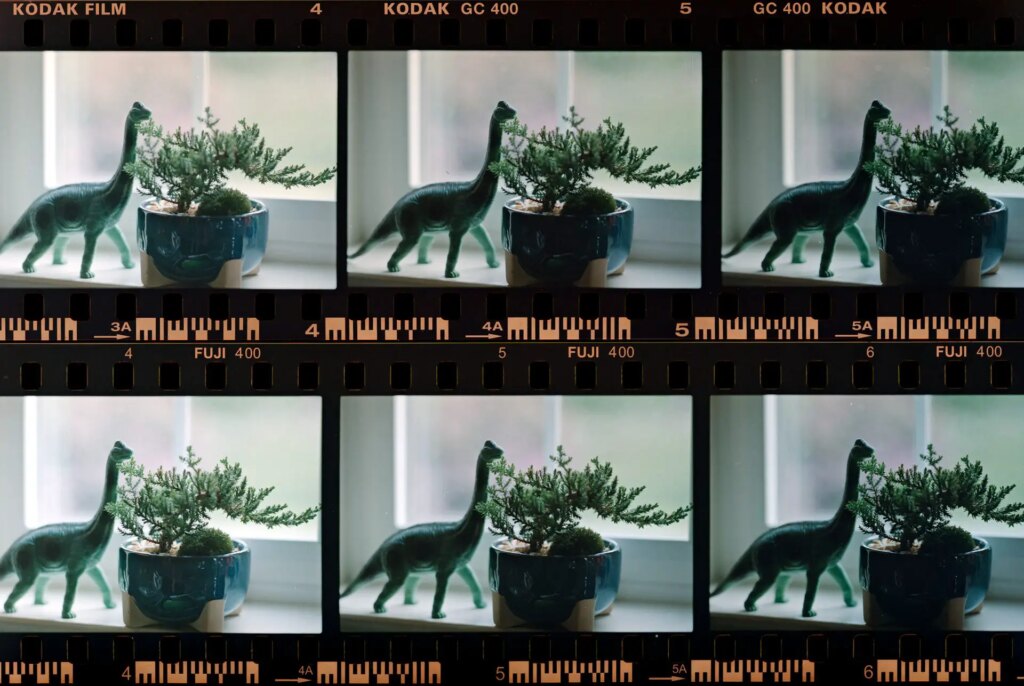
The two rolls were lab processed at my local lab (Retro Photo Reading) and DSLR scanned at home. For scanning, I use locked down manual settings which were consistent through both rolls. I color converted with Grain2Pixel with batch settings for sampling and color cast removal and Auto Light Balance disabled. No further adjustments were made to the converted images.
Results
My hypothesis, given all facts, was that the two films would be identical apart from the rebate text. Laying the two film strips on a lightbox as seen in the above image, this certainly seemed to be the case. On direct visual inspection they look the same to me.
After scanning and comparing, I can see difference in most images, but it is so extremely slight that I consider it mostly within the margin of error for my home brew methodology. Looking for consistent patterns, I see no difference in sharpness or grain at all. I see what seems to be slightly more forgiving shadow detail in the Fuji, but so minor that I believed this was just minor differences in shutter timings of the two cameras (but maybe not). The only difference I see which I found noteworthy, and again it is very slight, is a yellow bias in the Fuji stock vs a bluer bias in the Ultramax. I see this throughout the roll. Looking closer at the strips on the lightbox pictured above, which is a single shot of the two side by side, I see this slight yellow bias and, yes, lighter base tone in the rebate. Fujifilm 400 looks slightly lower in contrast.
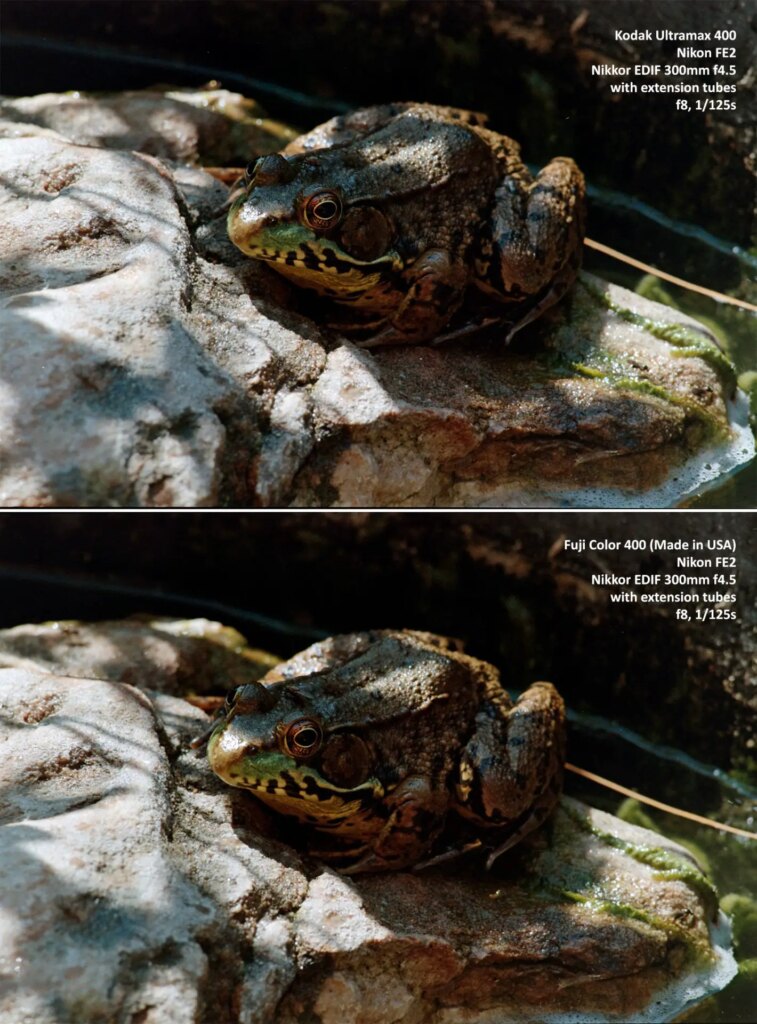
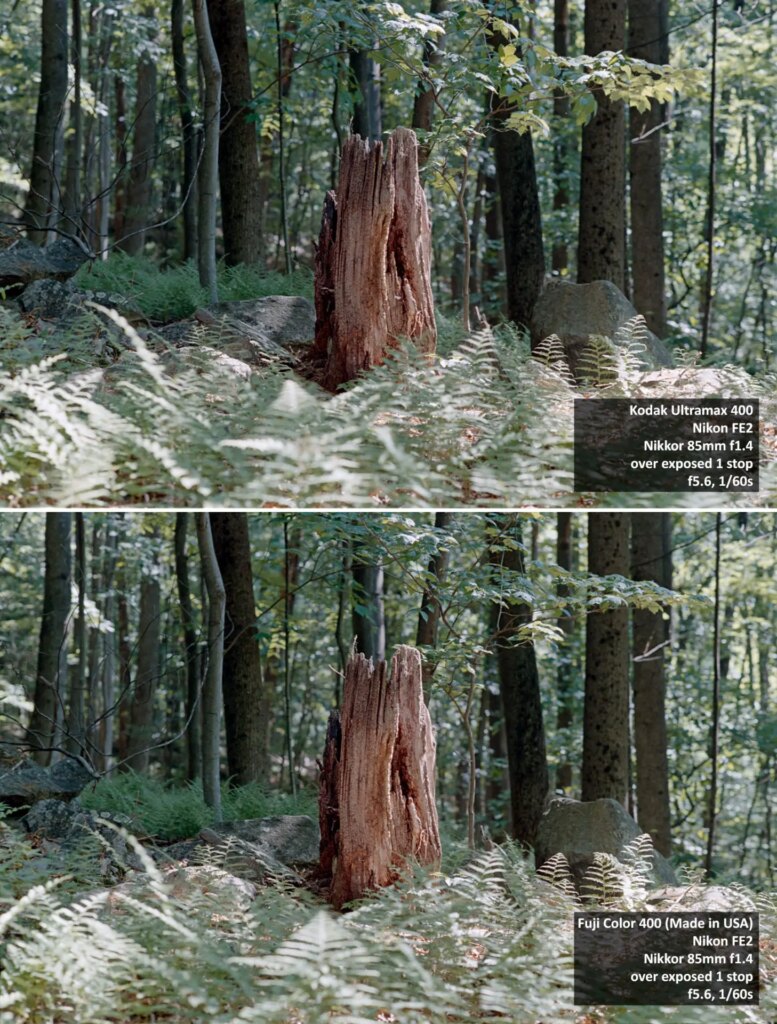
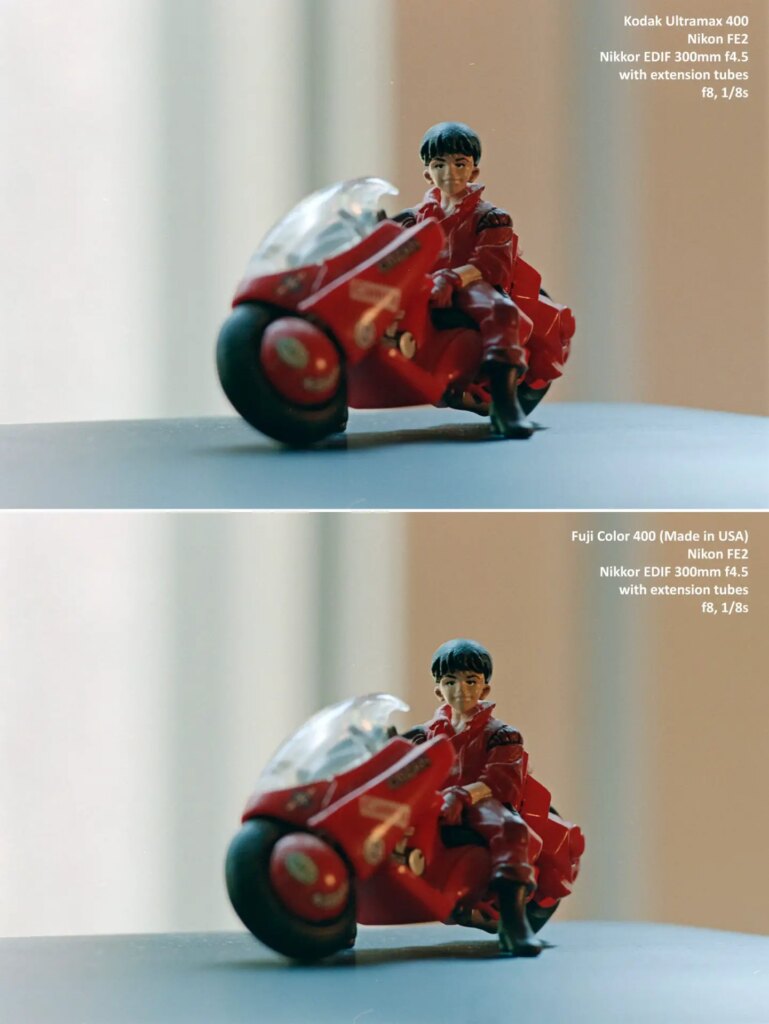
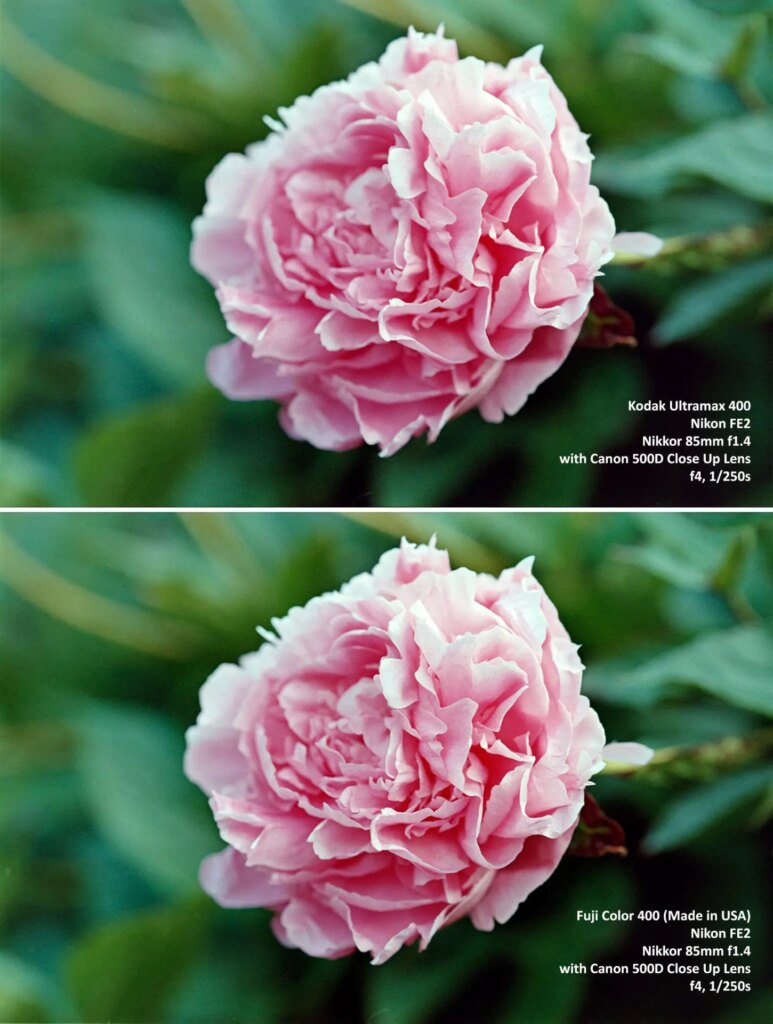
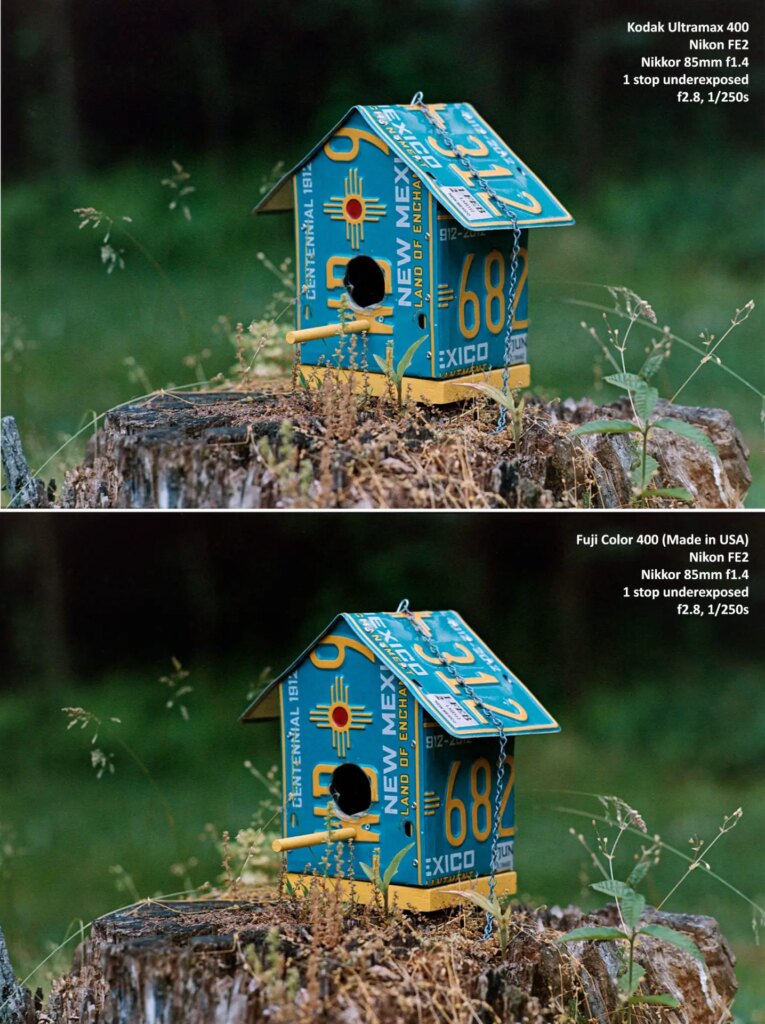
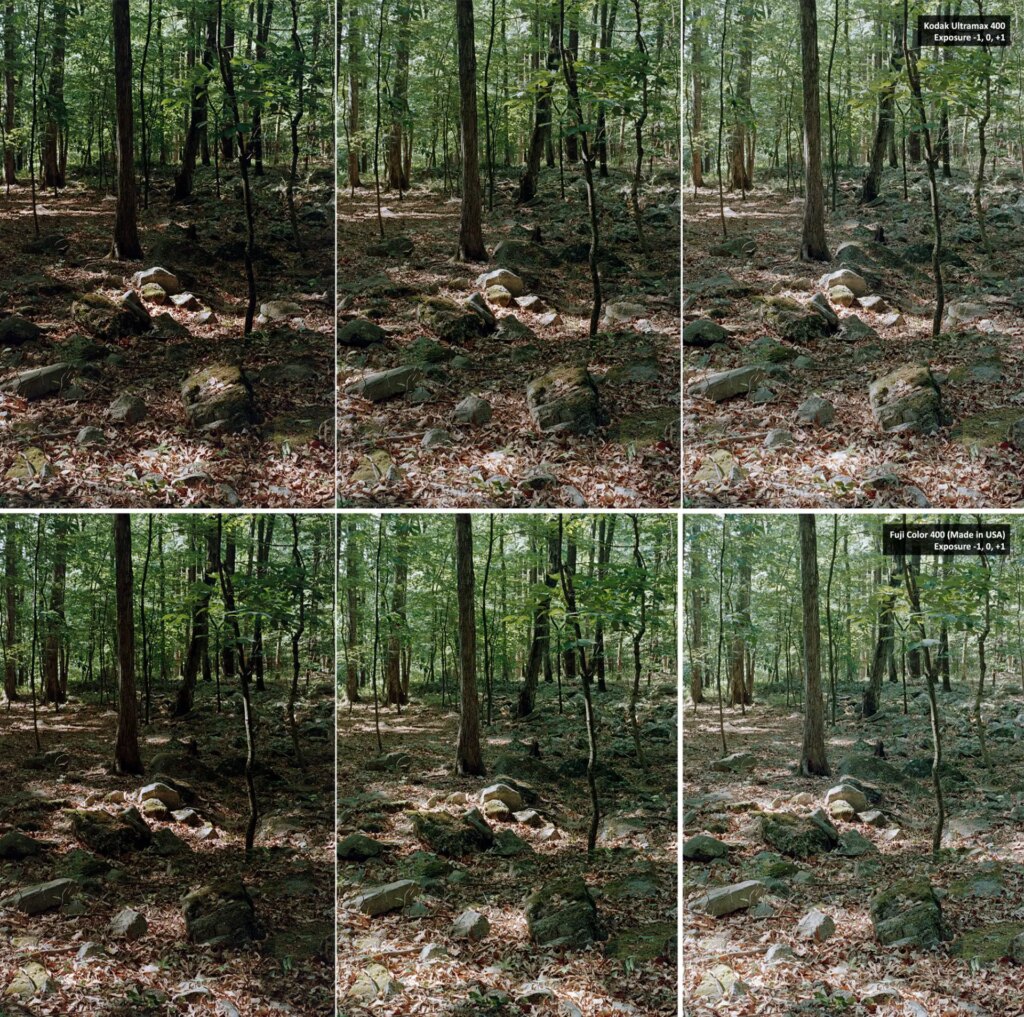
Conclusion
I can’t help but arrive at these two film stocks appearing so close in results that I might as well think of them as interchangeable, though I do see minor difference. I hope other folks might do their own testing and I would be interested to see if anyone has different findings. Either way though, the differences are not enough for me to give much distinction between the two.
I have mixed feelings about this. For the most part, I’m sad to see a color film removed from circulation when choices are already fairly limited. Superia was not a stock that I shot often, but I can appreciate the loss for the folks who did. It was also widely available and generally the most budget friendly color film. That said, it seems that Fujifilm 400 will be the drug store option at present and prices will be lower than Kodak branded rolls. I’ve checked my local Walmart shelf the past few times I’ve been in and they are stocking it, which is far better than the long stretch when the Superia shelf was just empty. I haven’t seen Ultramax on a drug store shelf in two years.
Crumbs? Maybe. But, as an Ultramax shooter who just wants reliable access to film, I’ll take them.
Update: Datasheet comparison
Thanks to the comment pointing out that, between the writing and publishing of this article, a new datasheet has been published. The spectral curves and characteristic curves are not identical. This isn’t surprising to me as my results may be similar but they are not identical either. Resizing and adjusting the proportions of the scales to match each other, differences are apparent and I am not technically savvy enough to know how big those differences are in practical use. When I looked up the old Superia Xtra 400 curves, this added some context for me. I share these here mostly for added context and I’ll leave discussion for any folks with more expertise in reading this type of information. 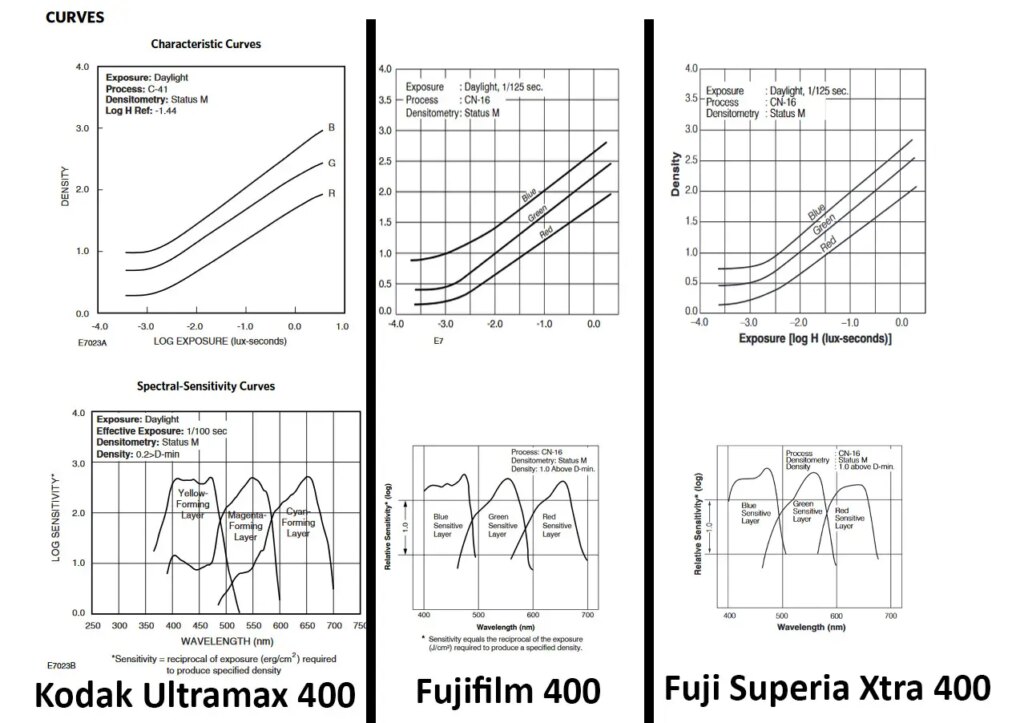
Share this post:
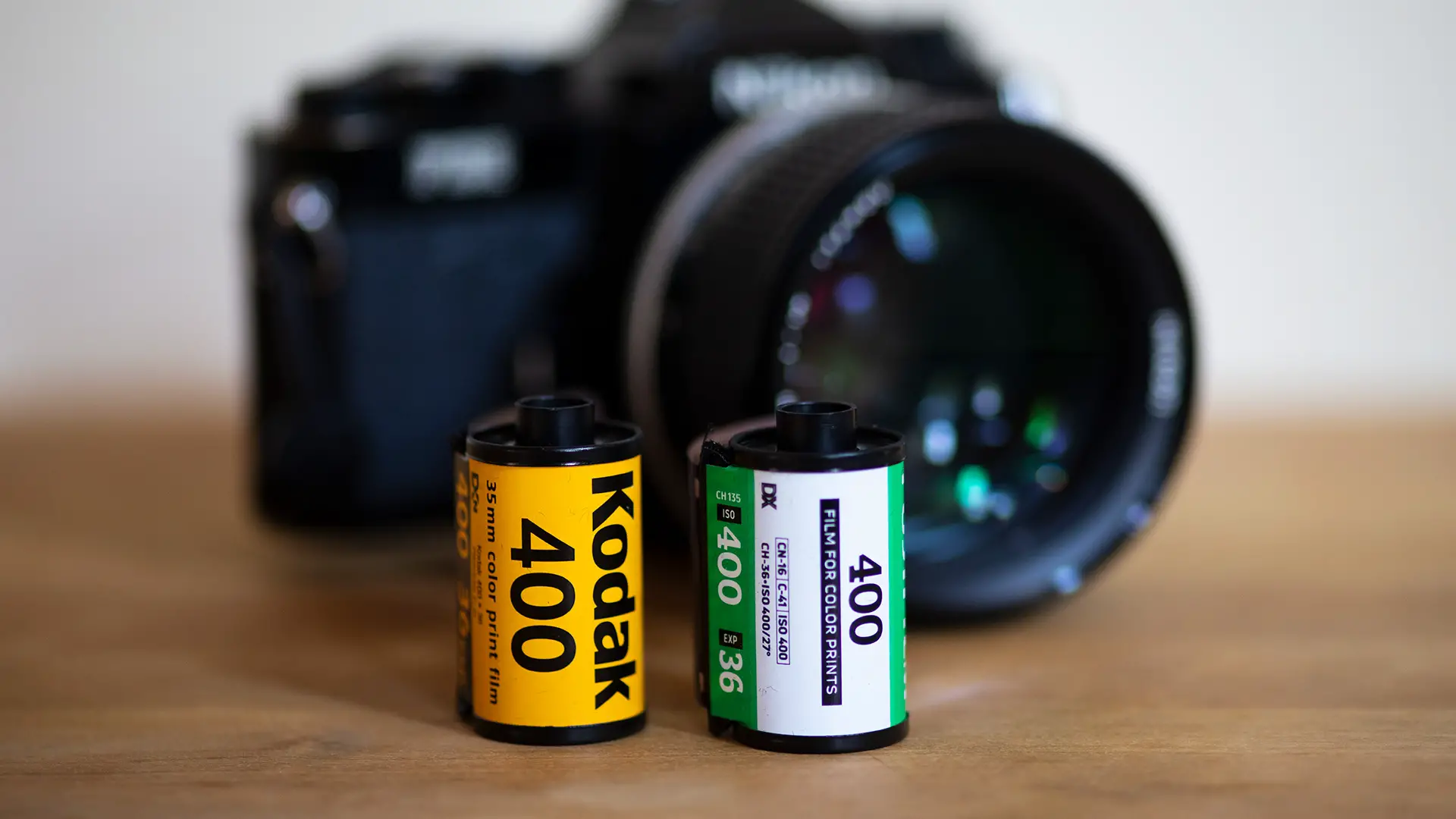








Comments
Mats on Fujifilm 400 (made in the USA) vs. Kodak Ultramax 400 – The Same, or Different…?
Comment posted: 11/07/2023
Comment posted: 11/07/2023
Comment posted: 11/07/2023
Tom Perry on Fujifilm 400 (made in the USA) vs. Kodak Ultramax 400 – The Same, or Different…?
Comment posted: 11/07/2023
Superia Xtra 400 wasn't my first choice, but I suppose I will shoot the rolls in my freezer with extra care now.
Zatōichi on Fujifilm 400 (made in the USA) vs. Kodak Ultramax 400 – The Same, or Different…?
Comment posted: 11/07/2023
Comment posted: 11/07/2023
Comment posted: 11/07/2023
Comment posted: 11/07/2023
Comment posted: 11/07/2023
Del on Fujifilm 400 (made in the USA) vs. Kodak Ultramax 400 – The Same, or Different…?
Comment posted: 11/07/2023
Comment posted: 11/07/2023
Comment posted: 11/07/2023
Will Brown on Fujifilm 400 (made in the USA) vs. Kodak Ultramax 400 – The Same, or Different…?
Comment posted: 11/07/2023
Comment posted: 11/07/2023
Comment posted: 11/07/2023
Joseph Irvin on Fujifilm 400 (made in the USA) vs. Kodak Ultramax 400 – The Same, or Different…?
Comment posted: 11/07/2023
Comment posted: 11/07/2023
Geoff Chaplin on Fujifilm 400 (made in the USA) vs. Kodak Ultramax 400 – The Same, or Different…?
Comment posted: 12/07/2023
Eric Charles Jones on Fujifilm 400 (made in the USA) vs. Kodak Ultramax 400 – The Same, or Different…?
Comment posted: 12/07/2023
Comment posted: 12/07/2023
Jon on Fujifilm 400 (made in the USA) vs. Kodak Ultramax 400 – The Same, or Different…?
Comment posted: 29/09/2023
I reckon their US product change is due to a business decision where having Eastman Kodak (who are likely producing the new Fujifilm 400, in addition to existing Ultramax and other Kodak-branded consumer films on behalf of Kodak Alaris) is able to produce more financial viability and/or allow for a more stable supply of the product. (And, Eastman Kodak would most certainly use different emulsions and formulas between the products they manufacture for Kodak Alaris versus other companies.)